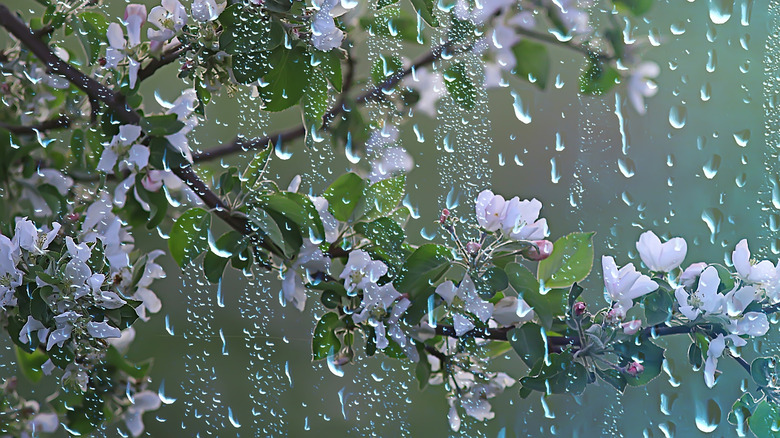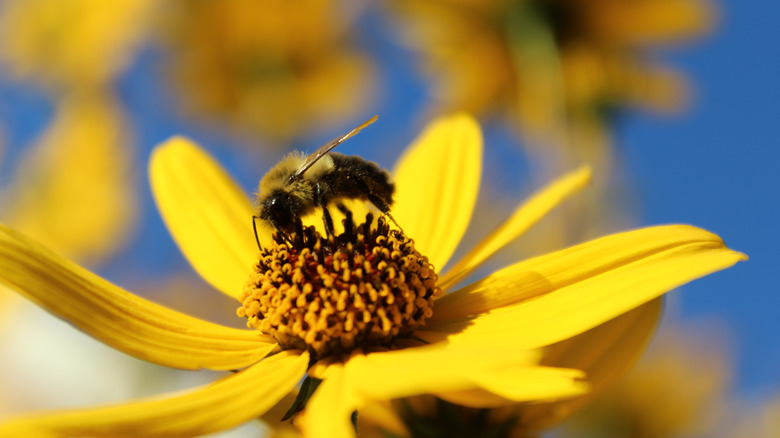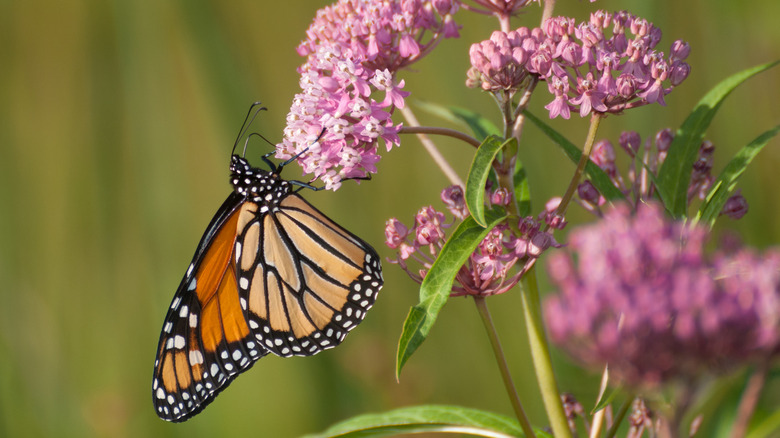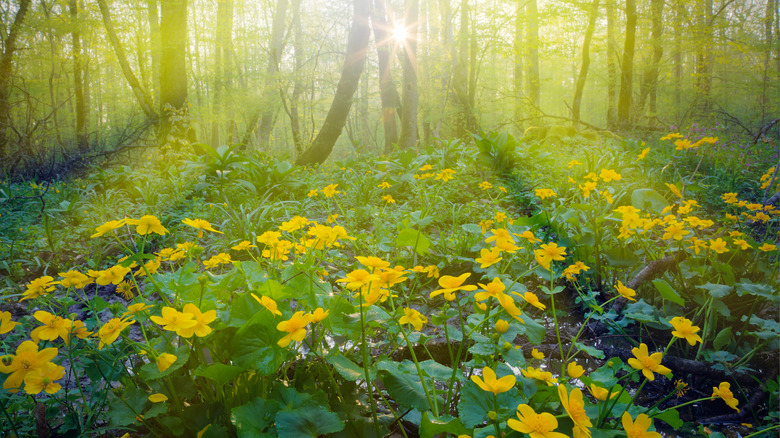The 3 Best Plants You Should Add To Your Garden To Reduce Runoff
Anyone who's ever seen a picture of the Grand Canyon understands that water can be a powerful force over time. But it can be harder to appreciate the destructive power of each little rainstorm that visits your neighborhood. Raindrops hit the hard surfaces of buildings and streets and start traveling fast. Even lawns are basically a slip-and-slide for rainfall, the short blades of grass and their shallow roots do little to slow the runoff down. These flows of water rinse oil and dirt from roads, leech fertilizer from lawns, and generally sweep chemicals that are safe in their usual context away, dumping them in rivers, lakes, and seas where they can cause havoc.
The good news, according to the EPA, is that rain gardens — areas specifically planted with rain-loving wildflowers in a depressed area with amended soils and proper drainage systems — are an attractive and simple way to intercept rainwater before it really gets going. They catch the water and allow it to slowly percolate down into your soil rather than washing it away. Plus, they are a beautiful way to attract pollinators and other fauna to your garden. Here are three of the best plants to consider adding to your garden to reduce runoff.
Swamp sunflower (Helianthus angustifolius)
A close relative of the more famous garden sunflower, these blooms are also sunny by name and sunny by nature. Their bright, lemon-hued petals will thrive in full sunlight and seem to reach for the sun. But as the name suggests, they prefer to keep their feet wetter than their cousins. This makes them perfect for planting in a boggy area to reduce runoff. Before the flowers get going, their foliage is also cherished. The 6-inch long, narrow, sessile, lance-shaped leaves provide shelter and shade during the summer. Per Gardening Know How, the swamp sunflower can grow between 5 to 7 feet tall, so make sure to give them enough headroom.
If you want to extend the flowering season in your garden, Sunday Gardener pointed out that the swamp sunflower is one of the latest-blooming sunflower varieties, as well as being very attractive to bees, butterflies, and other fauna. This means you'll have colorful flowers in your garden right through fall and provide crucial food and habitat to wildlife that can struggle to survive as the winter closes in.
Swamp milkweed (Asclepias incarnata)
Monarch butterflies only lay their eggs on milkweed plants, according to USDA Forest Service, so if you decide to plant this showy, colorful plant in your runoff-reducing rain garden, you're doubly eco-friendly! As well as being crucial for the survival of this beautiful species, the swamp milkweed provides Monarchs and a plethora of other butterflies with nectar to eat, and the gorgeous flowers have a sweet, distinctive scent. Some say it smells of cinnamon, others vanilla, but all agree that it's one of the best-smelling plants in the garden.
Swamp milkweed is a perennial plant, so you'll only have to plant it once. According to Gardenia, it thrives in medium to wet soils and grows 3 to 5 feet tall and 1 to 3 feet wide. The prized blooms are on display from midsummer to late fall, and the plant will spread itself via creeping rhizomes. As beneficial as swamp milkweed can be for reducing runoff and helping the Monarch butterfly population, growers need to beware that it can be poisonous for dogs, cats, and horses — though this does mean that it is generally deer-resistant.
Marsh marigold (Caltha palustris)
Marsh marigolds are also known as Kingcup. Caltha is derived from the Greek for 'goblet' according to the Wildlife Trusts, and palustris from "palus" — the Latin for 'swamp.' They grow as clumps of kidney-shaped leaves, each 4 to 5 inches across, and in late spring and early summer, their large, golden-yellow flowers appear. Per Gardener's World, these blooms resemble bigger, waxier buttercups. But of course, they also can be compared to the cups of kings!
What makes each of these three plants among the best to add to your garden to reduce runoff is that they aren't just pretty flowers that do OK in waterlogged soil. They bring something extra to the party, and the marsh marigold is no exception. As noted by The Conservation Volunteers, marsh marigolds are one of the first wetland flowers to bloom in the spring. This makes them a crucial source of shelter, pollen, and nectar for wildlife in the earlier part of the year. Hoverflies, bees, and the large bee-fly will all benefit from marsh marigolds being in your garden, plus frogs, newts, and other riparian animals will shelter in the cool, damp shade of their leaves and flowers.



